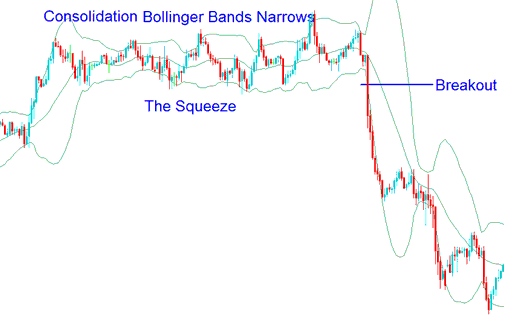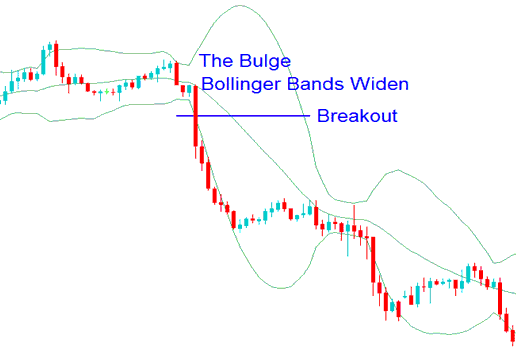Bollinger Bands Stock Indicator Bulge and Squeeze Technical Analysis
The Trading Bollinger Band are self adjusting which means the bands widen and narrow depending on price volatility.
Standard Deviation is the statistical measure of the price volatility used to calculate the widening or narrowing of the Bollinger bands. Standard deviation will be higher when prices are changing significantly and lower when the stock market prices are calmer.
- When price volatility is high the Bollinger Bands widen.
- When price volatility is low the Bollinger Bands narrows.
How to Trade Bollinger Bands Squeeze
Narrowing of Bollinger Bands is a sign of price consolidation and is known as the Bollinger band squeeze.
When the Bollinger Bands indicator display narrow standard deviation it is usually a time of price consolidation, and it is a stock signal that there will be a price breakout and it shows stock traders are adjusting their trade positions for a new move. Also, the longer the prices stay within the narrow bands the greater the chance of a price breakout.

Bollinger Squeeze - The Bollinger Bands Squeeze - How to Trade Bollinger Bands Squeeze
How to Trade Bollinger Bands Bulge
The widening of Bollinger Bands is a sign of a price breakout and is known as the Bollinger Bands Bulge.
Bollinger Bands that are far apart can serve as a stock signal that a stock trend reversal is approaching. In the Bollinger bands stock indicator example illustrated below, the Bollinger bands get very wide as a result of high price volatility on the down swing. The stock trend reverses as prices reach an extreme level according to statistics and the theory of normal distribution. The "bulge" predicts the change to a downwards trend.

Bollinger Bulge - The Bollinger Bulge - How to Trade Bollinger Band Bulge


